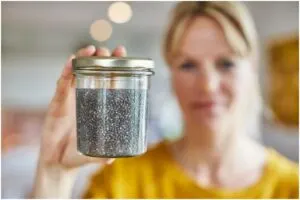Navratri is one of the most famous of all Hindu festivals. “Nav” translates as ”nine” and “ratri” translates as ”night”, thus ”Navratri festival” means a festival spread over nine nights and ten days.
The 10th day, that is usually referred to as ”Vijayadashami” or “Dussehra”, celebrates the victory of Lord Rama over Ravana, of Shakti over Mahishasura, and of Durga over demons like Madhu-Kaitav, Chanda-Munda, and Shumbha-Nishumbha; this represents the victory of good over evil.
These 9 forms are worshiped together during the ”Nine Divine Nights” festival, that occur 4 times throughout the year, namely: Chaitra Navratri, Sharad Navratri (most important and widely celebrated), Ashadha Gupta Navratri and Maha Gupta Navratri.
Fasting is a common practice by many participants during the celebrations. Alcohol, meat, grains, wheat (grains are avoided as they are considered to absorb negative energy due to the seasonal changes at this time), garlic, and onions are avoided by those fasting.
In Hindu tradition, there are 3 major forms in which Goddess Durga manifested herself, namely, Mahalakshmi, Mahasaraswati, and Mahakali who are the active energies of Brahma, Vishnu and Rudra respectively (without these goddesses the gods will lose all their special powers).
These 3 forms of Goddess Durga further manifested in 3 more forms each, and thus emerged the nine forms of Goddess Durga, which are collectively called Navadurga (Nine Durgas).
The Nine Forms of Goddess Durga – Navadurga significance
#1 Shailaputri
Shailaputri literally translates from Sanskrit as the daughter (putri) of the mountains (shaila). Her 2 hands display a lotus and a trident.
Shailaputri wears the crescent moon in her hair. She is mounted upon a bull. Her worship takes place on the first day of Navratri. The color to wear on the first day is Red. Devotees offer pure desi ghee on the foot of Shailputri.
#2 Brahmacharini
Brahmacharini means one who practices devout austerity. Brahmacharini spent 1000 years on the diet of fruits and flowers and another 100 years on the diet on leafy vegetables while sleeping on the floor.
Maa Brahmacharini is a storehouse of wisdom and knowledge.
Rudraksha is her most adorned ornament. Filled with happiness and bliss, she is the way to moksha (liberation). Brahmacharini is portrayed barefoot, holding a pot of holy water and a strand of prayer beads.
Her worship takes place on the 2nd day of Navratri. The color to wear on the second day is Royal Blue.
#3 Chandraghanta
She has a ”chandra” or half moon on her forehead in the shape of a ”ghanta” or bell. Her name is derived from the”chandra” (literally translated as – half moon) in her forehead in the shape of a (bell).
This form of the Mother Goddess is ready for war with all her weapons, to protect the welfare and peace of Her followers.
She carries an arrow, lotus flower, Japa Mala and Dhanush in Her 4 right hands and keeps the 5th right hand in Abhaya Mudra (the mudra of no-fear). It is acknowledged that the planet Shukra is governed by Goddess Chandraghanta.
The Goddess is worshiped and adored on the 3rd night of Navratri. The color to wear on the third day is Yellow.
#4 Kushmanda
She created the Universe in the flash of Her smile and is considered to grant niddhis (wealth) and siddhis (supernatural powers) to Her followers.
Kushmanda holds a Dhanush, kamandalu, Bada, and Kamal in Her right hands. She is worshiped on the 4th day of Navratri.
The color to wear on the fourth day is Green.
#5 Skandamata
She is accompanied by the Lord Skanda (also known as Murugan) in his infant form. It is said that by the mercy of Maa “Skandamata”, even the idiot becomes an ocean of knowledge such as “Kalidas.”
It is considered that the planet Budha is governed by Goddess Skandamata. She is adored on the 5th day of Navratri. The color to wear on the fifth day is Grey.
#6 Katyayini
As a mother, Maa “Katyayani” stayed in the Ashram of sage Katyayan for penance, so the Goddess was named “Katyayani”. This 6th Shakti is also astride a lion with 4 arms and 3 eyes.
One left-hand holds a weapon and the other a lotus. The other 2 hands respectively display granting and defending mudras (hand gestures).
Katyayini’s complexion is golden colored. It is considered that the planet Brihaspati is governed by Goddess Katyayani. She is worshiped on the 6th day of Navratri. The color to wear on the sixth day is Orange.
#7 Kalaratri
The destroyer of ignorance and darkness, Maa “Kalaratri” is the 7th form of Nav-Durga. She is also known as ”Shubhamkari” – one who does good deeds.
She is black like Goddess Kali and holds a sparkling sword in her right-hand in the battle against all evil. Her gesture of protection assures us of freedom from fear and troubles.
It is considered that the planet Shani is governed by Goddess Kalaratri. She is worshiped on the 7th day of Navratri. The color to wear on the seventh day is White.
#8 Mahagauri
Due to her long austerities in the deep forests of the Himalayas, Mahagauri Goddess developed a dark complexion.
When Lord Shiva cleaned her with the water of the Ganges, her body regained its beauty and she came to be known as Maha Gauri, which signifies extremely white. Compassion and peace radiate from Her.
Mahagauri holds a trident and a drum and is frequently illustrated riding a bull. She makes the mudras of granting boons and liberating from fear.
She is worshiped on the 8th day of Navratri. The color to wear on the seventh day is Pink.
#9 Siddhidatri
Siddhidatri Goddess has supernatural healing powers.
She blesses all Gods, saints, tantrics, yogis, and all devotees as a manifestation of the Mother Goddess Durga and is worshiped by Gandharvas (male nature spirits), humans, asuras and devas alike.
Maa Siddhidatri’s famous pilgrim center is located in Nanda Parvat in the Himalayas. Lord Shiva got the title of Ardha-Narishwar when the Goddess appeared from his left half. Siddhidatri Goddess sits on a lotus, holding chakra, mace, conch, and lotus.
She is worshiped on the 9th day of Navratri. The color to wear on the seventh day is Sky Blue.
References https://www.thoughtco.com/nine-forms-of-goddess-durga-1770307 https://food.ndtv.com/food-drinks/navratri-2017-nine-forms-of-durga-the-special-prasad-offered-to-them-1674852
- About the Author
- Latest Posts
As a founder and chief author at InsightState.com, Bulgarea Candin helps readers on their spiritual journeys. His writings are designed to inspire creativity and personal growth, guiding readers on their journey to a more fulfilled and enlightened life.



